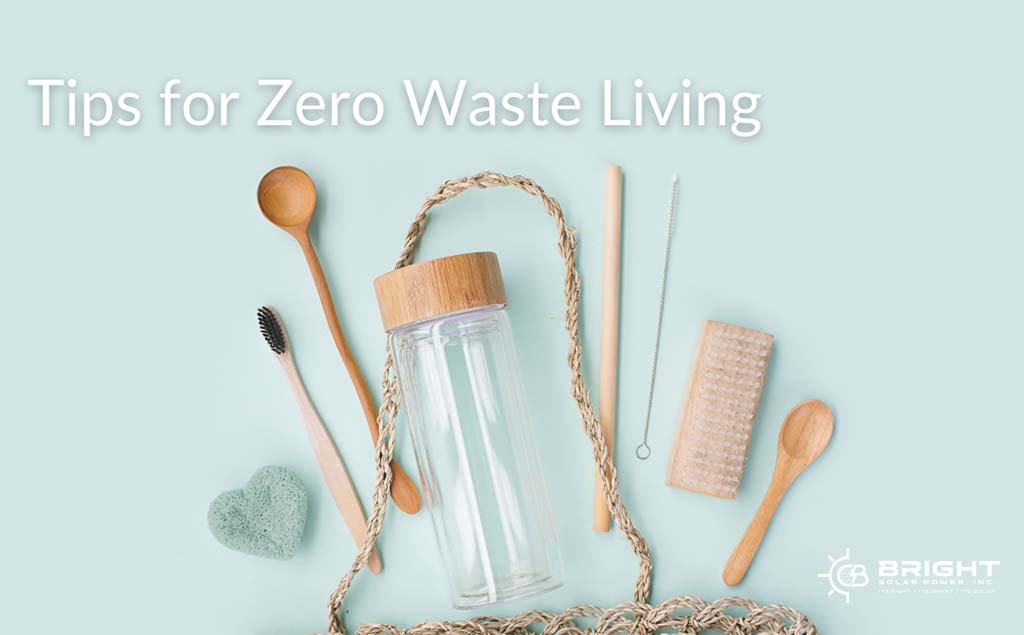As of 2018 the Environmental Protection Agency, EPA, estimated that each person created 4.9 pounds of trash every day.
Changing the type of energy your home runs on is just one way to reduce your carbon footprint. Check out these suggestions to lower your waste production and your carbon footprint! Bea Johnson is on the frontlines of stylish, zero waste living, and in her book Zero Waste Home, she outlines five “R’s” that create the backbone of her zero waste life.
• Refuse what you do not need.
• Reduce what you do need (and cannot refuse)
• Reuse what you consume (and cannot refuse or reduce)
• Recycle what you cannot refuse, reduce, or reuse
• Rot (compost) the rest
Sound great but a little overwhelming? Let’s break it down:
Refuse what you do not need: This step is pretty easy! You can reduce paper waste by going to the Federal Trade Commission’s website and opting out of those pesky junk mailings and credit card approvals and refusing handouts at conferences, events, and shopping malls.
Reduce what you do need: This step requires you to really look hard at what you need compared to what you think you need. This can look like decluttering your home and donating the excess to a thrift store or going shopping with a shopping list to limit the amount of items you come home with! By reducing what you bring home you lower the amount that you’re inevitably going to throw out!
Reuse what you consume: With the rising trend of personalized coffee cups and water bottles, this step is incredibly easy! Did you know that by carrying a reusable water bottle you can save more than 150 plastic bottles? By using reusable products you’re immediately cutting down on your waste output.
Recycle what you cannot refuse, reduce, or reuse: Recycling is the step we’re probably all most familiar with. Finding your local recycling locations and knowing your local recycling policies is easy and can remove a large bulk of the remaining waste coming from your home! To maximize your efforts, recycling should be thought of as the last step, not the first. By reducing, reusing, and refusing items first, you lower your total waste output more so than by simply recycling.
Rot the rest: Did you know that by composting leftover food and organic material, you can feed your backyard garden or trees organically? Creating a compost bin for your home is an easy way to lower the amount of organic waste leaving your home and to build an organic fertilizer for your home! Check out this article from NPR breaking down composting!
Zero waste living starts with simple lifestyle changes that start at home. Reducing the amount of items brought home, recycling and composting items are simple steps you can take to start a zero waste lifestyle. Alongside your Bright Solar Power California solar array, zero waste living will help to lower your carbon footprint! We work with the top companies that keep sustainability as the main priority. Call us today at (760) 545 8466 for your free quote!

